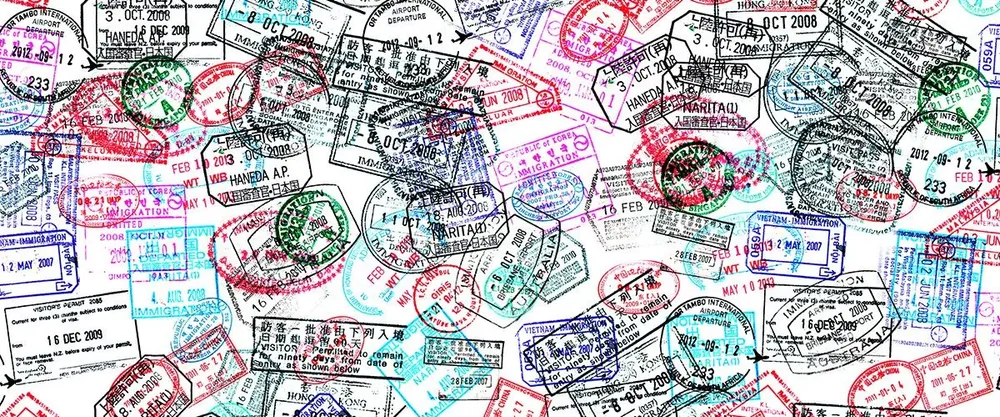Moving to Costa Rica
If you have ever visited or seen photographs of Costa Rica, you already know that this Central American country boasts lush rainforests, towering mountain ranges, active volcanoes and 780 miles of coastline. Add in the country’s temperate year-round climate, and it is no wonder that many North Americans consider Costa Rica an ideal place to relocate.
As of the country’s last census, it was reported that Costa Rica’s population is 9% immigrants, the highest percentage in Latin America. If you have been dreaming of relocating to Costa Rica, read on to learn how to turn those dreams into a reality.
Reasons to Move to Costa Rica
People from around the world choose to make Costa Rica their home for a variety of reasons: to retire, to work, to learn Spanish or simply to experience another culture. While there are many reasons people make the move to an overseas location, Costa Rica is the choice of people attracted to:
- Costa Rica’s culture of “pura vida”
- A lower cost of living
- High-quality, affordable health care
In addition, Costa Rica is a great choice for expats seeking:
- Safety and political stability
- Good internet and cellphone connectivity
- Geographical diversity and climate
Costa Rica’s “Pura Vida”
![[RLOC-010] additional image 1.jpg](https://storage.googleapis.com/relocate-production-store/RLOC_010_additional_image_1_6e038e313c/RLOC_010_additional_image_1_6e038e313c.jpg)
Native Costa Ricans — called Ticos — refer to the Costa Rican lifestyle as “pura vida,” which is Spanish for “pure life” or “simple life.” A pure life vibe is just what you can expect if you move to Costa Rica. The locals are known for their welcoming ways and easy-going spirit. In fact, Costa Rica ranks 15th on Forbes’ listing of the 20 happiest countries in the world and consistently rates at the top of the Happy Planet Index.
A peaceful nation, Costa Rica dissolved its military in 1949 to focus resources on maintaining a stable democratic government that puts conservation, education, health care and pensions for its population at the top of its political agenda.
Costa Rica is a world leader when it comes to protecting the environment. With an economy deeply dependent on ecotourism, the country is committed to achieving carbon neutrality or net-zero carbon emissions by 2050.
Cost of Living
Many expats are attracted to Costa Rica because it is a beautiful country with a low cost of living. A single person can live outside the big city centers for less than $1,300 a month, and that includes rent for a one-bedroom apartment, utilities, high-speed internet, a car and gas, food, a mobile phone, health care and medicines, and a reasonable amount of entertainment. Couples can live reasonably well on $2,000 a month.
For $4,000 a month, you and a partner can live comfortably in the capital city of San Jose or one of the more expensive expat-occupied coastal towns or interior developed communities. For families, the cost will be a bit higher depending on how big a home you need and whether you plan to send your children to an English and Spanish bilingual private school.
The average monthly private school tuition per pupil varies, although the English instruction International School of Costa Rica is a bit high, charging each student over $10,000 per year. Many families choose to send their children to Costa Rica’s public schools, which are quite good, but Spanish fluency is required.
High-Quality, Affordable Health Care
All Costa Rican citizens and permanent residents are required to sign up for Costa Rica’s public health care system, Caja Costarricense de Seguro Social (CCSS), referred to by the locals as “the Caja.” The annual cost is between 7% and 11% of your income. The Caja covers all doctor visits, prescription drugs, and medical procedures provided through the country’s public medical facilities, with no additional charges or copays.
While not required, some expats opt for additional private health insurance at an average cost of $150 a month, which allows them access to English-speaking physicians in private health care clinics. Private insurance also allows patients to bypass the wait times that many associate with Costa Rica’s universal health care system.
Stability
Costa Rica has the most stable and democratic government in Central America. Bordered by the Caribbean Sea to the east, the Pacific Ocean to the west, Nicaragua to the north, and Panama to the south, Costa Rica offers its citizenry excellent education — from grade school through university — and a stable economy based on agriculture, tourism and electronics exports.
Good Connectivity
As long as you stay in a larger city or one of the more developed areas, you will have no problem with internet or cellphone service. Costa Rica has first-class connectivity when it comes to both. With this solid cyber infrastructure, you can easily stay in touch with family and friends back home, work remotely, and keep up with all your shows and movies with your favorite streaming apps. There are plenty of internet and cellphone coverage plans to choose from.
It’s also easy to travel to and from Costa Rica. There are two international airports — in San Jose and Liberia. The roads in and around the major cities are well-maintained, but you will need four-wheel-drive vehicles to get around some of the rougher terrain around the mountain areas.
Geographical Diversity and Climate
![[RLOC-010] additional image 2.jpg](https://storage.googleapis.com/relocate-production-store/RLOC_010_additional_image_2_63a16da32d/RLOC_010_additional_image_2_63a16da32d.jpg)
Perhaps the most inviting aspect of Costa Rica is its geographical diversity and wide range of climates. Costa Rica is home to a rich array of primary and secondary rainforests, swamplands, wetlands, dry forests, mangroves and cloud forests, lakes, rivers and majestic waterfalls. The country has 800 miles of tropical coastline — 80% of which is found on the mountainous Pacific Coast, with the remainder found on the sandy Caribbean beachside of the country.
Although technically located in the tropics, Costa Rica has 12 climate zones that range from hot and humid to chilly and cold. In fact, the only three climates that are not in Costa Rica are the three that are least hospitable to humans: tundra, snow, and desert. Rather than the four seasons most North Americans are used to, Costa Rica has just two seasons: the rainy season from May to November and the dry season from December to April.
Choosing Where to Live in Costa Rica
With all of its beauty and geographic and climate diversity, choosing where to live in Costa Rica can be a challenge. The country is divided into five regions: Central Valley, Gold Coast, Southern Zone, Central Pacific and Arenal.
![[RLOC-010] additional image 3.jpg](https://storage.googleapis.com/relocate-production-store/RLOC_010_additional_image_3_37a325226a/RLOC_010_additional_image_3_37a325226a.jpg)

![[RLOC-010] additional image 1.jpg](https://storage.googleapis.com/relocate-production-store/RLOC_010_additional_image_1_6e038e313c/RLOC_010_additional_image_1_6e038e313c.jpg)
![[RLOC-010] additional image 2.jpg](https://storage.googleapis.com/relocate-production-store/RLOC_010_additional_image_2_63a16da32d/RLOC_010_additional_image_2_63a16da32d.jpg)
![[RLOC-010] additional image 3.jpg](https://storage.googleapis.com/relocate-production-store/RLOC_010_additional_image_3_37a325226a/RLOC_010_additional_image_3_37a325226a.jpg)



